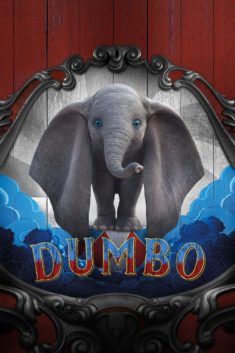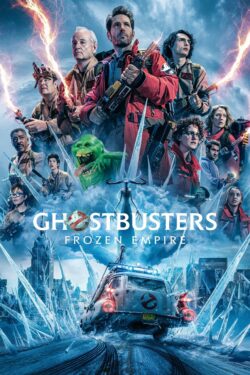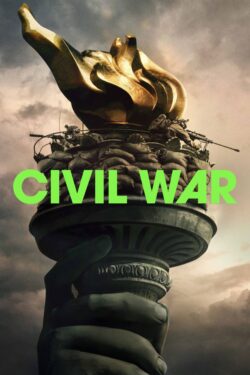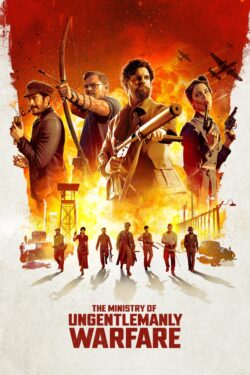Dumbo (2019)
Animal Action

All horseback riders were stunt riders or experienced actors who were skilled at riding, mounting and dismounting. All running/galloping scenes were well choreographed, and actors used caution while on and near animals. The horse(s) rearing was a trained behavior. When teams of horses pulled wagons or carriages, the drivers were experienced, and teams of horses were familiar with each other and accustomed to the pulling action. Whenever horses were seen tied to posts/fences, they were attached to lead ropes tied to posts.
In the scene where we see two doves standing on a magician’s box, the doves were carried to the set by the trainer in their transport box. When the cameras were ready the doves were taken out of the transport box and the trainer attached a monofilament line to the tether ring on each dove. Then he placed each dove in its position and hid behind the box while the cameras rolled. The trainer moved the tether line occasionally, which encouraged the doves to open and close their wings and fidget slightly.
In the same sequence, when we see the man in the circus with a snake wrapped around his neck, the snake was carried to set in his transport box by the handler. The handler lifted the snake out of the box and placed him on the actor’s shoulders. The actor held him on his shoulders through the shot. Between takes, the handler lifted the snake off the actor and held him.
In this same scene, when we see two colored poodles running out of a tent, prior to shooting the scene, the dogs were allocated to a building where they rested and were prepared by the groomer. The dye used to color the poodles was safe, water based, non-toxic dye, developed specifically for coloring animal coats. The dogs were trained trick dogs, accustomed to performing on stage for shows and displays. The dogs were led to set by the trainer and handler, using their collars and leather leads. The action for the dog, along with the circus troupe performers had been well rehearsed previously. On action, the trainer let the dogs go and they ran to another trainer standing behind the camera.
In the circus scene where we see fish in a tank, prior to shooting the scene, the trainer tested the water for ph levels and temperature. The fish were transported to the set in groups of 10 in each bag. The bags were half filled with water and pumped full of oxygen. The trainer lifted one bag at a time out of the box and using a ladder, carried the bag of fish up to the top of the tank. She lowered the bag into the water, gently tipping the fish into the tank. This was done with two bags, resulting in 20 fish in the tank. They filmed the scene and returned the fish back to the holding area.
When we see the boy approach the bird cage, prior to shooting the trainer placed two live doves, one at a time, into the cage. The trainer stood just off set to keep the birds at one side of the cage. The camera was static, looking though the bars towards the big top set behind. They filmed the scene then returned the birds to the holding area.
In the scene where we see the circus performers partying and there’s a dog jumping up and down in the background, the poodles were led to set by the trainer. Each poodle was asked to jump up and sit on a pedestal each. The trainer was in costume and stood in front of the dogs. During the action, the trainer asked the green poodle to jump down and jump through a hoop that the trainer held. The dog followed suit and was rewarded.
In the parade scene, where we see tons of people welcoming the children in the car, and we see two men on horseback lead the cavalcade and a horse drawn carriage in the background, the cart was pushed by trainers from behind. The horses were ridden to set from their stables nearby. On action, the horses were driven forward at a walk, and turned on a curve to the right. The distance travelled each take was 100ft.
In the scene where the actors talk in the stable and there’s a horse in the background, the horse was led to set from the holding area by the groom wearing the regular head collar and rope. Once he was led into the stables, the groom swapped the headcollar for the costume rope halter. The horse was positioned as required by the camera crew and director. A pile of hay was then placed in front of the horse
In the scene where they’re in the horse training tent and we see five horses being ridden in a circle, the horses were tacked up at the horsebox and mounted by the riders. A utility stunt worker walked in front of the horses on their route to set. The set was a large ‘tent’ with an earth floor and a large ‘tent pole’ at either end. On action, the riders rode the horses to a canter in a left handed circle around the pole at one end of the tent.
In the scene where there’s a fire and the actor sets two horses free and jumps on the third horse and rides out of the stable, once the horses were led into the stables, the grooms removed the stirrups from the two liberty horses but they remained tacked up in the saddles and bridles. On action, the trainer used whips to encourage one of the horses to rear in the stable. On cue, the actor ran in and opened the stable door. The trainer (using whip signals) then sent the horse out of the stable. The actor then ran to the second stable and opened the door. The actor pulled the horse forward and out of the stable using his bridle. A groom waiting out of shot, took the horse and led him into the taped off area outside the stable set.
In the scene where the crowd runs out of the tent, while the actor rides the horse, pushing through the crowd, the set flooring was rough sawn hard-wood and the horse wore solid rubber shoes, giving good grip on the wood. The extras and crowd on set were stunt performers. Each fire and flame effect apparatus had a member of the fx crew to monitor and control it. The gas flame effects had a pilot light installed to prevent any gas escape. On action, the actor double rode the horse forward, at right angles to the camera, stopped turned then urged the horse into a canter and past the camera in a right curve. In post they’ll make it look as if he’s swerving through the crowd.
In the scene where the actor rides into the tent, jumps off the horse, lassos the other actor, and the horse rides off dragging him, the stunt rider got on the horse. For two rehearsals without fire effects, from a point near the circus ring entrance, he cantered across the set towards a stunt performer doubling an actor. As he came within 6ft of the stunt man, the trainer threw the lasso over the stunt man’s head, so the loop slipped down to his ankles. For the takes, the same action was followed, but the SFX dept lit the fires and started the smoke effects. The riding actor jerked the lasso rope and the standing actor fell back onto a crash mat. The riding actor dropped the lasso and turned and rode away at a canter. This stunt was done twice and once achieved, the actor riding double dismounted and a groom took the horse off set to stand by. The trainer wore a green suit and rode the horse while dragging the stuntman. The stunt performer was attached to the stunt drag rig and the rope was hooked over the pommel of the saddle.
When we see the actor enter the ring, riding in a circle, then the horse rears back, two horses were tacked up at the horseboxes and led to set by grooms. The stunt double mounted one of the horses and waked him around the circus ring. On action, for both takes, he went into a canter around the ring for 4 laps. He then came back to a walk for half a lap and turned in to the center of the ring as the trapeze performer was lowered down. The horse was kept still by the rider so he was beneath the trapeze performer, who lowered herself down onto the horses back. The wire riggers then lifted the trapeze ring up out of the way and the two stunt performers cantered around the ring for one lap before coming to a stop in the center of the ring to ‘salute” the crowd by each raising one arm.




